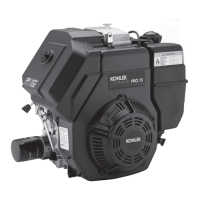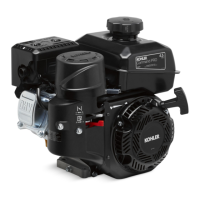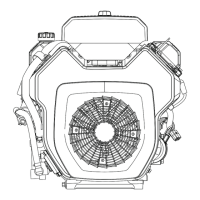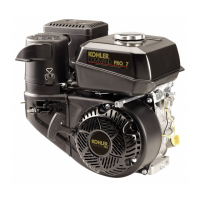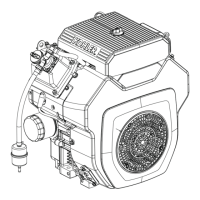8.10
Section 8
Electrical System and Components
Battery
General
A 12 volt ba ery (not furnished) with a minimum current rating of 230 cold cranking amps/18 amp hours should
be suffi cient for cranking most electric start engine models. The actual cold cranking requirement depends on
engine size, application and starting temperatures. Cranking requirements increase as temperatures decrease
and ba ery capacity shrinks. Refer to the operating instructions of the equipment this engine powers for specifi c
ba ery requirements.
If the ba ery charge is not suffi cient to turn over the engine, recharge the ba ery.
Electric Starting Motors
Electric start engines in this series use an inertia drive starter.
Starting Motor Precautions
NOTE: Do not crank the engine continuously for more than 10 seconds at a time. If the engine does not start,
allow a 60 second cool-down period between starting a empts. Release the switch as soon as the engine
starts. Failure to follow these guidelines can burn out the starter motor.
NOTE: If the engine develops suffi cient speed to disengage the starter but does not keep running (a false start),
the engine rotation must be allowed to come to a complete stop before a empting to restart the engine.
If the starter is engages while the fl ywheel is rotating, the starter pinion and fl ywheel ring gear may
clash, resulting in damage of the starter.
NOTE: If the starter does not crank the engine, shut off the starter immediately. Check the condition of the
inline fuse and do not make further a empts to start the engine until the condition is corrected.
NOTE: Do not drop the starter or strike the starter housing. Doing so can damage the starter.
Troubleshooting Guide – Starting Diffi culties
Problem Possible Fault Correction
Starter
Does Not
Energize
Battery
1. Check the specifi c gravity of ba ery. If low, recharge or replace ba ery as
necessary.
Wiring
1. Check fuse condition.
2. Clean corroded connections and tighten loose connections.
3. Replace wires in poor condition and with frayed or broken insulation.
Starter Switch
or Relay
1. Check the switch or relay operation. If starter cranks normally, replace
the faulty components.
Starter
Energizes
But Turns
Slowly
Battery
1. Check the specifi c gravity of ba ery. If low, recharge or replace ba ery as
necessary.
Wiring
1. Check for corroded connections, poor ground connection.
Transmission
or Engine
1. Make sure the clutch or transmission is disengaged or placed in neutral.
This is especially important on equipment with hydrostatic drive. The
transmission must be exactly in neutral to prevent resistance which could
keep the engine from starting.
2. Check for seized engine components such as the bearings, connecting
rod, and piston.
